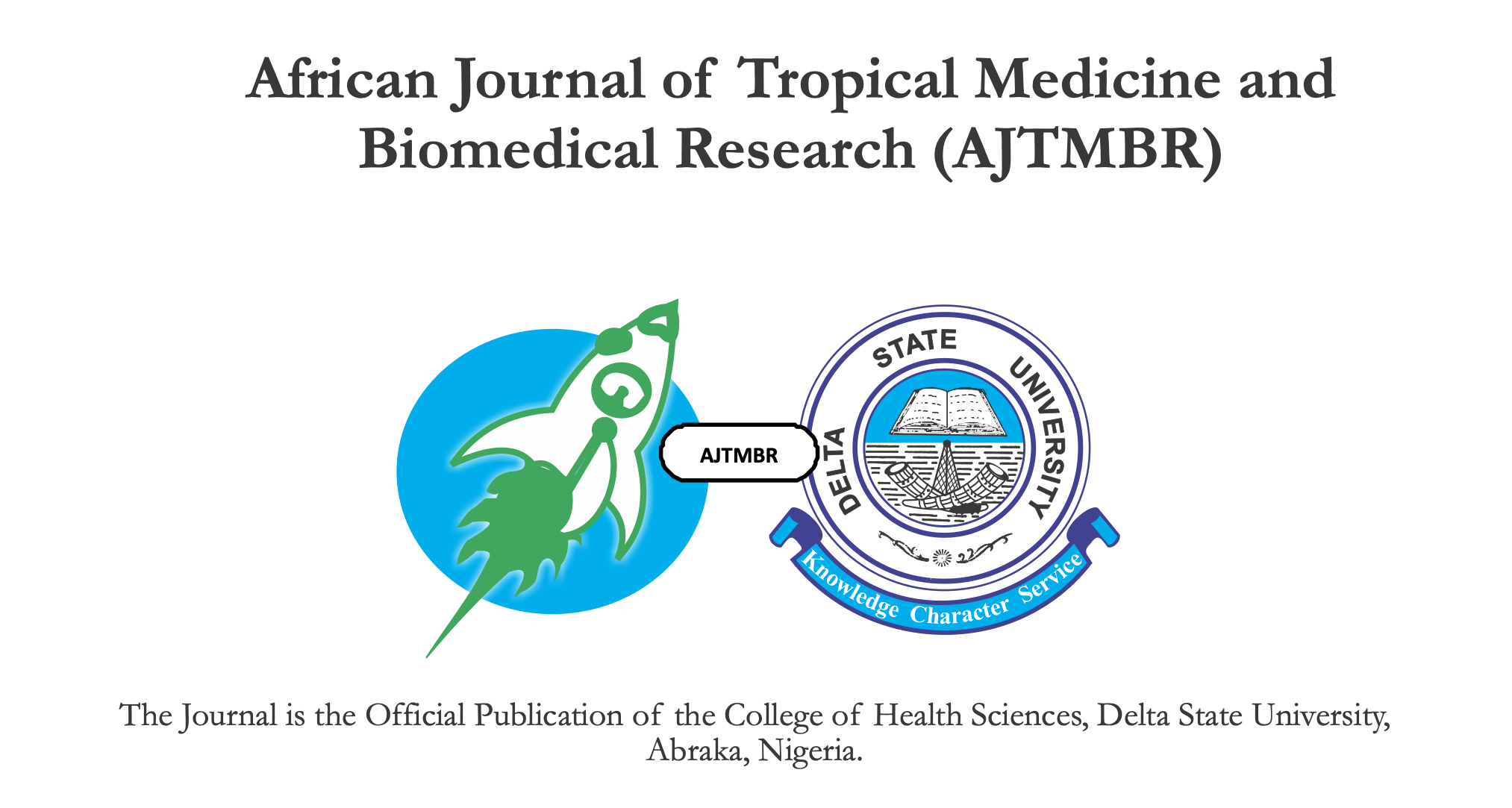Limb amputations at a Tertiary Hospital in the Developing World:
A Look at Pattern and Indications
Keywords:
Limb amputationAbstract
Objectives: To determine the pattern of amputations in a tertiary centre.
Design: Retrospective.
Setting: Orthopaedic Department of the University of Benin Teaching Hospital, Benin City, Nigeria.
Patients: Two hundred and ten (210) Individuals who underwent limb amputations between January 2007 and December 2011.
Results: There were one hundred and forty nine (149) male and sixty one (61) female patients (71% and 29% respectively). The ages ranged from one year (1) to ninety years (90). The mean age at presentation was 42.33±19.96 (SEM = 1.378). Limb ischaemia, trauma and neoplasia made up 55.7%, 35.7% and 4.8% respectively of all cases analyzed. There were one hundred and fifty (150) lower limb amputations and sixty (60) upper limb amputations.
Conclusion: Limb Ischaemia is the commonest indication for amputations done at the University of Benin Teaching Hospital.
References
Onubs O, Ediodiok E. The scope of amputation in developing world: a review of the literature. Postgrad Doctor. 1989;11:118-121.
Robinson KP. Historical aspects of amputation. Ann Roy Coll Surg Engl. 1991; 73: 134-136.
Ogeng'o JA, Obimbo MM, King'ori J. Pattern of limb amputation in a Kenyan Rural hospital. Int Orthop (SICOT). 2009;33:1449-1453.
Olasinde AA, Oginni LM, Bankole JO, Adegbehingbe O, Oluwadiya KS. Indications for amputations in Ile Ife, Nigeria. Niger J Med. 2002;11(3):118-120.
Dada AA, Awoyomi BO. Is the trend of amputation in Nigeria changing? A review of 51 consecutive cases seen at Federal Medical Centre Ebute Metta, Lagos, Nigeria. Niger J Med 2012;51:167-169.]
Thanni LO, Tade AO (2007) Extremity amputation in Nigeria a review of indications and mortality. Surgeon 5:213- 217
Paudel B, Shrestha,BK, Banskota,AK. Two faces of major lower limb amputations. Kathmandu Medical Journal. 2005; 3(3): 212-216
El Bushra Ahmed Doumi, Aisha Jabir Ali. Major limb amputations in El Obeid Hospital, Western Sudan Sudan JMS Vol. 2, No.4 , Dec. 2007. 237-239
Othman Maimani, Zohair Jamil Gazzaz, Mian Usman Farooq Amputations in a tertiary care hospital. Acta Medica Academica 2009;38:86-91]
Phillipo L Chalya, Joseph B Mabula, Ramesh M Dass, Isidori H Ngayomela, Alphonce B Chandika, Nkinda Mbelenge, Japhe t M Gi l yoma . Ma jor l imb amputations: A tertiar y hospital experience in northwestern Tanzania. Journal of Orthopaedic Surgery and Research. 2012, 7:18 doi:10.1186/1749- 799X-7-18.
Adeghate E, Schattner P, Dunn E. An Update on the etiology and epidemiology of diabetes mellitus. Ann N Y Acad Sci. 2006;1084: 1-29.
Akiode O, Shonubi AM, Musa A, Sule G. Major limb amputations: An audit of indications in a suburban surgical practice. J Natl Med Assoc 2005;97:74-78
Nwankwo OE, Katchy AU. Surgical limb amputation: A five year experience at Hilltop orthopaedic hospital, Enugu, Nigeria. Nigerian Journal of Orthopaedics and Trauma. 2004;3:139-149].

Downloads
Published
Issue
Section
License

This work is licensed under a Creative Commons Attribution-NoDerivatives 4.0 International License.
Key Terms:
- Attribution: You must give appropriate credit to the original creator.
- NonCommercial: You may not use the material for commercial purposes.
- ShareAlike: If you remix, transform, or build upon the material, you must distribute your contributions under the same license as the original.
- No additional restrictions: You may not apply legal terms or technological measures that legally restrict others from doing anything the license permits.
For full details, please review the Complete License Terms.



